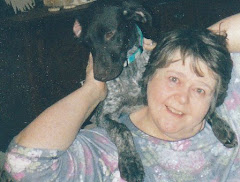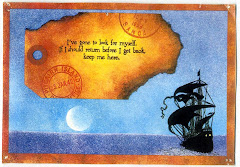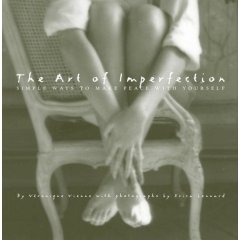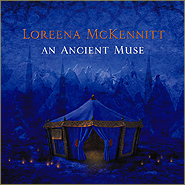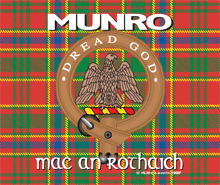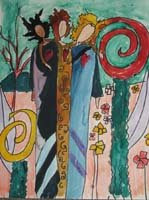"GYPSIES" by Hablot Knight Browne
When I wrote my post "The Scottish Connection" I mentioned that my Scottish Great-Aunt Teenie used to love it when the tinkers came 'round, so that she could practice her Gaelic on them. Reading "5 Precious Things", the blog by my Scottish friend Ruthie, I came across the term tinkers again. Ruthie mentioned that she had read two books about these unique Scotsmen and women.
Fascinated, I decided to do some research on the tinkers and learned to my horror that they are a much-maligned segment of Scottish society. The first thing I learned is that "tinker" (tink/tinkie) is no longer an accepted term. In fact, it is pejorative and derogatory. So is gypsy or gypo, another label which has been falsely assigned to them. The very word tinker (also tinkler) is often commonly used to disparage someone of dirty appearance or untidy and antisocial habits. But contrary to popular belief, tinkers highly value cleanliness and have a definite moral code.
The confusion arises because there are actually more than a half dozen types of traveling people in Scotland, consisting of diverse, unrelated communities speaking a variety of different languages and holding to distinct customs, histories and traditions. (In using their titles I am going to continue with the Scottish spelling of "travellers" even though it bothers my American eye - and Spell Check doesn't like it either. My usage of the term "tinker" is meant to be very respectful).
The groups are the afore-mentioned Highland Scottish Travellers, Lowland Scottish Travellers, Irish Travellers, Border Gypsies, Fairground Travellers, New Age Travellers, and the Roma Gypsies (or Romany/Romanichal).
The New Age group is self explanatory. The Fairground Travellers (also called Fun Fair Travelers or Showmen) move around with carnivals and fairs and would probably equate with what we derogatorily call "carnies" in America. The Roma are members of a tribe that originated in Northern India long ago and spread throughout all of Europe. They are the traditional Gypsies, a shortening of the misnomer Egyptians.
Highland Scottish Travellers of old
Highland Scottish Travellers, while perhaps one of Europe's last nomadic people, are not Roma Gypsies. They are distinct from them ethnically, culturally and linguistically. They are indigenous, Gaelic-speaking people. In Scottish Gaelic they are known as the Ceàrdannan ("the Craftsmen"). The word tinker itself comes from the Gaelic "tinceard" or tinsmith. Poetically known as the Summer Walkers, they also are referred to as traivellers, traivellin' fowk and nawkers.
Summer Walkers are closely associated with the Northwest Highlands, and many of the families carry clan names like Macfie, Stewart, MacDonald, Cameron, Williamson and Macmillan. They would pitch their bow tents at the edge of villages and earn money there as tinsmiths, hawkers, horse dealers or pearl fishermen. Many found seasonal employment on farms, e.g. at berry picking or during harvest. They also brought entertainment and news to the country folk.
The Highland Scottish Traveller community has a long history in Scotland with records going back to the 12th century. They share a similar heritage with, although distinct from, the Irish Travellers. As with their Irish counterparts, there are several theories regarding the origin of Scottish Highland Travellers, one being that they are descended from the Picts. Other theories are that they were excommunicated clergy, or families fleeing the Highland potato famine or the pre-Norman-Invasion.
Tinkers in front of their traditional bow tent
The tinkers' camps were to be seen in sheltered spots throughout the glens and straths. They knew the terrain as intimately as town dwellers know their local high street, particularly which houses would give them a welcome and which houses should be avoided.
The menfolk repaired pots and pans and made horn spoons, willow baskets and clothes pegs for their wives to sell. In addition to seasonal work on the farms, many dealt in scrap iron, and a few fished the rivers for fresh water pearls to sell. The women peddled, or hawked, their wares - household goods and crafts.
Caption reads Colin {and} Clementine MacDonald -
traditional family who follow the whelks
Spring to Autumn from Angus to West Highlands
Scottish Travellers have a secret cant, or language, the Beialrearich, which has never been written down. It is a complex mixture of Scots and Gaelic, some of it archaic, with a sprinkling of Romany. This allows the tinkers to switch nimbly to cant in the presence of even Gaelic-speaking strangers, a skill that was useful when they were questioned about suspected theft or poaching.
Sadly, all traveling people have been given a bad reputation, thanks to some of their number. True Scottish Highland Travellers were often erroneously perceived to be thieves, liars, shysters, con men, beggers, fortune tellers and the like. Country folk often projected their fear of "gypsies" into tales of how they kidnapped children.
In a horrifying reversal of this, tinkers believed that they were perpetually threatened, young and old alike, by the prospect of abduction to the dissecting rooms of medical schools. Stories were told of relatives who had unaccountably disappeared, said to have been snatched by the "noddies", top-hatted medical students who drove the black "burkers" (doctors') coaches through the countryside at night in search of their prey. It is little wonder that the tinkers refused to leave their old people and children unattended when in the hospital.
Certainly Scotland has not always been kind to tinkers, leaving them suspicious not only of hospitals but also of wary of strangers and officials. Under 17th Century Scottish law, to be a gypsy was a capital crime punishable by hanging! "Egyptians" were ordered to "quit the realm within thirty days on pain of death". The famous outlaw and fiddler James MacPherson was executed under this statute.
Even when free from all hints of reproach, the name tinker signifies people whose way of life makes them outsiders. A contributory factor to their isolation is the Scottish climate, which is less than suitable for a nomadic lifestyle because of its harsh winters and unpredictable rain and wind at any season of the year.
Some photos I found did not distinguish between
different types of Scottish travelers. With their gaily
decorated "Gypsy" wagon, these women may be Roma.
Recent changes in the economic structure of society have made both the tinkers' old way of life, and their ability to earn a traditional living, more difficult. Rural depopulation means that there are fewer houses at which to call, while the housewives' reliance on mass-produced goods has killed off many of the traditional tinkers' crafts.
Since the 1950s, other aspects of modern life have forced rapid changes on the travelling community. Tin smithing is a dead art, horse dealing a thing of the past, hawking is now done by catalog and supermarket. The majority of Scottish Highland Travellers have settled down into organized campsites or regular houses. They may still travel the roads today, but in smaller numbers and usually in vans and trucks, or what the British call caravans and we in the U.S. call travel trailers and RVs.
As early as WWI some traveling families were beginning to settle for the winter in rented rooms, taking to the road in the spring and returning each autumn so that the children could clock up the obligatory 200 half-day attendances at school. However, most families preferred their tents to what was often substandard housing, and many of the older generation still do.
Many older Travellers were brought up on the road and still remember in detail the traditional, archetypal lifestyle of Scotland's nomadic clans. Some have written books about this lifestyle. Here are the two books by and about Scottish Travellers that Ruthie mentioned in her blog:"The Yellow on the Broom: The Early Days
of a Traveller Woman " by Betsy Whyte
Betsy Whyte was born into a family of travellers who roamed the Scottish countryside between the wars. Whyte has been called a terrific storyteller and her recollection of her childhood has been described as vivid. Two later books make up her trilogy of the Travellers' way of life.
"Jessie's Journey: Autobiography of a
Traveller Girl" by Jess Smith
From the ages of 5 to 15, Jess Smith lived with her parents, sisters and a mongrel dog in an old blue bus. They traveled the length and breadth of Scotland, and much of England too.
Here's a link to other books about other Scottish tinkers: http://www.visitdunkeld.com/scottish-tinkers.htm
While Whyte and Smith put their stories in writing, other Scottish Highland Travellers have played an essential role in the preservation of traditional oral Gaelic culture. Their outstanding contribution to Highland life has been as custodians of an ancient and vital singing, storytelling and folklore tradition of great importance.
In the last 50 years folklorists have recorded a large number of tinker ballads, songs and folk tales. Many tinker men are accomplished pipers, whose skill adds to the family income. The folk song revival movement thrust a handful of Traveller singers and storytellers into an unexpected limelight.
It is estimated that only 2,000 Scottish travellers continue to lead their traditional lifestyle on the roads. They are still being fiercely discriminated against today. Those familiar with the Travellers detect an underlying sense of persecution and despair among these people who cherish the traditional ways and values of their forefathers.
Scottish Travellers at the famous
Aikey Brae Fair, Aberdeenshire, 1906


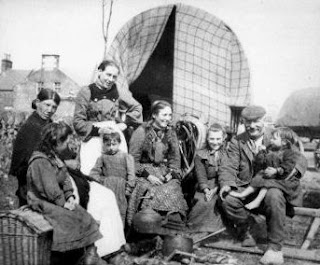















+Munro+Kidd.jpg)











